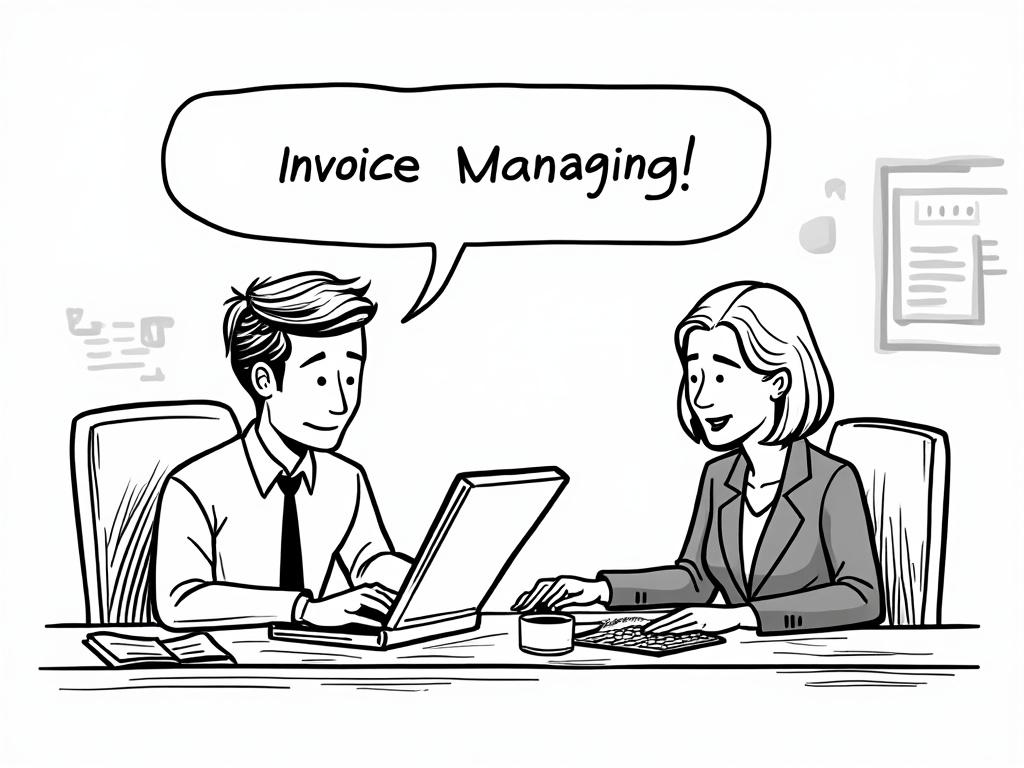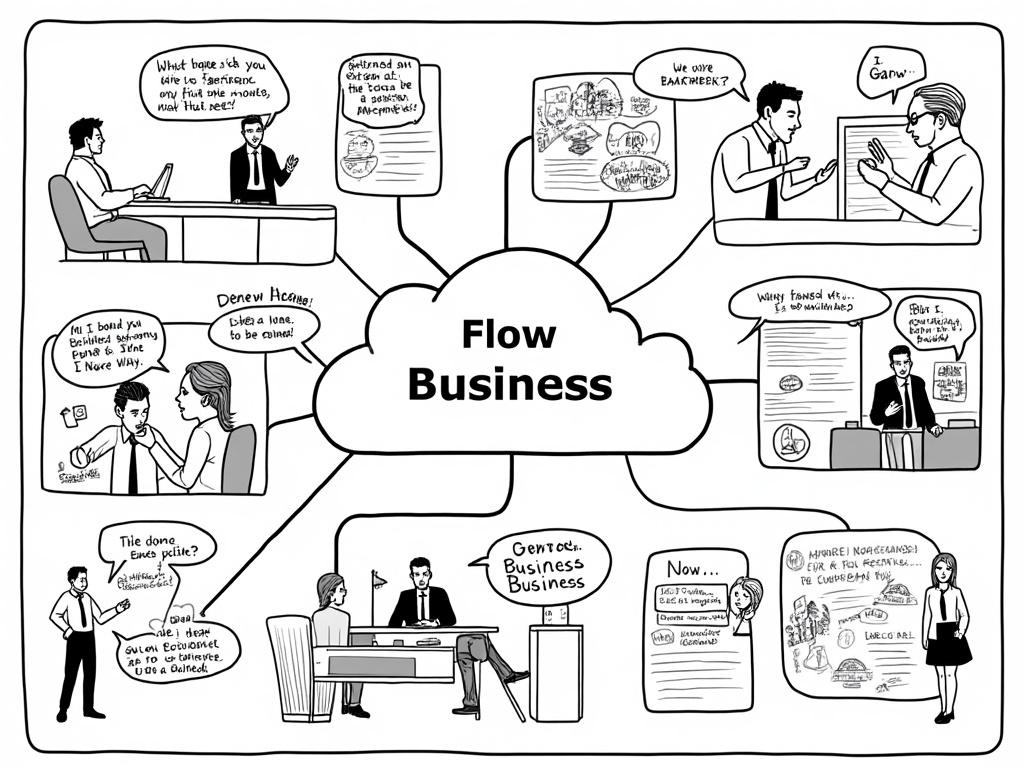
Navigating the Spanish Accounting Standards: A Comprehensive Guide to PGC for SMEs
Reading time: 12 minutes
Table of Contents
- Introduction to Spanish Accounting Standards
- Understanding the PGC Framework for SMEs
- Key Accounting Principles and Requirements
- Essential Financial Statements under PGC
- Common Compliance Challenges and Solutions
- Practical Implementation Strategies
- Leveraging Technology for PGC Compliance
- Conclusion
- Frequently Asked Questions
Introduction to Spanish Accounting Standards
Navigating the accounting landscape in Spain can feel like deciphering an arcane text—particularly for small and medium enterprises (SMEs) trying to balance growth with compliance. The Spanish General Accounting Plan (Plan General de Contabilidad or PGC) represents the cornerstone of financial reporting in Spain, with a specialized framework designed specifically for smaller businesses.
Let’s face it: accounting compliance isn’t exactly the reason you started your business. Yet understanding these standards isn’t merely about ticking regulatory boxes—it’s about creating financial clarity that can drive strategic decision-making and sustainable growth.
The PGC for SMEs was introduced to simplify accounting obligations while maintaining alignment with international standards. As Manuel García, former Director at the Spanish Accounting and Auditing Institute (ICAC), notes: “The SME version of PGC was designed as a balanced approach—providing smaller businesses relief from overly complex requirements while ensuring sufficient transparency for stakeholders.”
Understanding the PGC Framework for SMEs
The PGC for SMEs isn’t simply a slimmed-down version of the standard PGC—it’s a thoughtfully adapted framework that recognizes the unique operational realities of smaller businesses. To qualify for this simplified framework, your company must meet at least two of these three criteria for two consecutive years:
- Total assets not exceeding €4 million
- Annual turnover below €8 million
- Average employee count under 50
The framework consists of five distinct parts, each addressing a critical aspect of accounting practice:
Conceptual Accounting Framework
This establishes the fundamental principles that guide financial reporting. Think of it as the philosophical foundation upon which all accounting practices rest. It defines the essential qualities your financial information must possess: relevance, reliability, comparability, and clarity.
Consider the case of Soluciones Técnicas SL, a Valencia-based engineering firm. When seeking external investment, their adherence to these fundamental principles allowed potential investors to quickly assess their financial health and compare it meaningfully against industry benchmarks. Their commitment to transparent reporting ultimately secured a €1.2 million investment despite being a relatively small operation with just 28 employees.
Registration and Valuation Standards
These standards determine how you should record transactions and value assets and liabilities. The PGC for SMEs offers 23 standards compared to the full PGC’s 31, eliminating more complex elements like hedge accounting and multi-currency operations.
For example, the simplified treatment of financial instruments under the SME framework saved Barcelona-based online retailer CataloniaGoods approximately 40 hours of accounting work quarterly, allowing their two-person finance team to focus on cash flow management instead of complex valuation calculations.
Key Accounting Principles and Requirements
The PGC for SMEs operates on several fundamental principles that should guide your financial reporting. Understanding these principles isn’t just about compliance—it’s about adopting a financial mindset that enhances business management.
Core Accounting Principles
When implementing the PGC for SMEs, you’ll need to embrace these non-negotiable principles:
- Going concern (Empresa en funcionamiento): Financial statements are prepared assuming the business will continue operating indefinitely.
- Accrual basis (Devengo): Transactions are recorded when they occur, not when cash changes hands.
- Consistency (Uniformidad): Accounting methods should remain consistent across reporting periods.
- Prudence (Prudencia): Exercise caution in estimates and valuations, especially during uncertainty.
- Non-compensation (No compensación): Assets and liabilities, or income and expenses, cannot be offset against each other.
- Materiality (Importancia relativa): Focus on items that could influence economic decisions of users.
These principles aren’t merely theoretical concepts—they’re practical guides that shape day-to-day decisions. Consider how Comercial Rioja, a wine distributor with 15 employees, applied the prudence principle during the pandemic by recognizing potential customer payment defaults early, allowing them to adjust their cash flow projections and avoid a liquidity crisis that affected many of their competitors.
Essential Financial Statements under PGC
The PGC for SMEs requires three primary financial statements, a simplified approach compared to the five demanded by the standard PGC. Let’s break down what each entails:
Balance Sheet (Balance de Situación)
The balance sheet under the PGC for SMEs follows a structured format with assets on one side and equity and liabilities on the other. Unlike the full PGC, the SME version permits a condensed presentation that significantly reduces the number of line items.
Assets are classified by liquidity (current vs. non-current), while liabilities are organized by maturity. This provides a snapshot of your business’s financial position at a specific moment in time.
Pro Tip: When preparing your balance sheet, pay special attention to the classification of long-term vs. short-term debts. Misclassification can significantly distort your liquidity ratios, potentially raising concerns with creditors or investors.
Income Statement (Cuenta de Pérdidas y Ganancias)
The income statement for SMEs follows a vertical format, starting with revenue and working down to net profit. The simplified version merges some categories that are presented separately in the full PGC.
A critical distinction in the Spanish system is the separation of operating results (resultado de explotación) from financial results (resultado financiero), providing clearer insight into how core business activities perform independently of financing decisions.
Statement of Changes in Equity (Estado de Cambios en el Patrimonio Neto)
This statement tracks all changes in your company’s equity during the reporting period. The SME version is simplified compared to the full PGC, focusing on basic movements like profit/loss, capital increases or reductions, and dividend distributions.
While annual accounts for SMEs don’t require a cash flow statement or a comprehensive annual report, including them voluntarily can enhance transparency and aid in securing financing. As Elena Romero, Partner at Deloitte Spain, observes: “SMEs that voluntarily provide more comprehensive financial information typically secure better financing terms and build stronger relationships with financial institutions.”
Common Compliance Challenges and Solutions
Even with the simplified PGC framework, SMEs face several recurring challenges. Let’s examine the most common ones and their practical solutions:
Navigating Regulatory Updates
The Spanish accounting landscape isn’t static—regulatory updates can catch businesses off guard, as happened when new revenue recognition criteria were introduced in 2021.
Solution: Establish a compliance calendar with quarterly reviews of regulatory changes. Consider subscribing to updates from professional accounting bodies like the Instituto de Censores Jurados de Cuentas de España (ICJCE) or engaging an accounting advisor with a specific responsibility to flag relevant changes.
Valuation Complexities
Even under the simplified framework, certain valuation issues remain complex—particularly for intangible assets, impairment testing, and provisions.
Solution: Develop clear internal valuation policies that document your methodology and assumptions. For example, Softwares Ibéricos, a small software developer in Madrid, created a straightforward impairment testing protocol for their proprietary technology that systematized what had previously been an inconsistent process, reducing audit queries by 78%.
Practical Implementation Strategies
Implementing the PGC for SMEs effectively requires more than technical knowledge—it demands a strategic approach that balances compliance with practical business realities.
| Implementation Approach | Resource Requirement | Compliance Risk | Business Value | Best For |
|---|---|---|---|---|
| In-house accounting team | High (personnel costs) | Medium (depends on team expertise) | High (deeper business integration) | Growing SMEs with complex operations |
| External accounting firm | Medium (service fees) | Low (professional expertise) | Medium (less integrated) | Small businesses with standard operations |
| Hybrid approach | Medium-High | Low | High | Mid-sized businesses with specialized needs |
| Accounting software + periodic review | Low (software subscription) | Medium-High (limited oversight) | Low-Medium | Micro-businesses with simple finances |
Optimizing Your Chart of Accounts
The standard chart of accounts (cuadro de cuentas) in the PGC can be tailored to your specific business needs while maintaining compliance.
Practical Approach: Begin with the standard three-digit accounts from the PGC, then add fourth and fifth digits to create sub-accounts that provide the granularity your business needs. For instance, rather than using a single account for all utilities, create separate sub-accounts for electricity, water, and telecommunications to enable more detailed cost analysis.
Distribuciones Mediterráneas, a small distribution company in Alicante, restructured their chart of accounts to align with their six distinct product categories. This simple change improved their ability to analyze product line profitability, leading to a strategic decision to discontinue their least profitable line and invest more in their highest-margin category, boosting overall profitability by 14% within two quarters.
Documentation and Audit Trails
Strong documentation isn’t just about satisfying potential inspections—it’s about creating institutional knowledge and continuity.
Best Practice: Create an accounting policies manual that documents your specific interpretations and applications of PGC principles. This becomes particularly valuable during staff transitions or when working with external auditors.
Leveraging Technology for PGC Compliance
The right technological tools can transform PGC compliance from a burdensome obligation to a streamlined process that adds genuine business value.
Selecting Appropriate Accounting Software
Not all accounting software is created equal when it comes to PGC compliance. Key features to prioritize include:
- Native support for the Spanish chart of accounts
- Automated generation of PGC-compliant financial statements
- Digital preservation of accounting records in accordance with Spanish requirements
- SII (Suministro Inmediato de Información) compatibility for VAT reporting
- Multi-currency functionality if you operate internationally
Popular options among Spanish SMEs include A3ERP, ContaPlus, and Sage 50, as well as cloud-based solutions like QuickBooks Online and Xero (with proper customization for Spanish requirements).
Digital Transformation Opportunities
Beyond basic compliance, technology offers opportunities to extract strategic value from your accounting processes:
Document Digitization: Spanish law now recognizes digitally stored accounting records, provided they meet certain authentication and preservation requirements. This can dramatically reduce physical storage needs and improve document retrieval.
Automated Reporting: Set up dashboard systems that transform PGC-compliant data into actionable business intelligence. Textiles Catalanes, a Barcelona-based manufacturer with 42 employees, implemented a real-time financial dashboard that pulls data from their PGC-compliant accounting system, giving department managers visibility into their budget performance without waiting for month-end reporting.
Conclusion
The PGC for SMEs represents a thoughtful balance between robust financial reporting and practical business realities. While implementation requires initial investment and ongoing attention, the framework ultimately provides Spanish SMEs with a structured approach to financial management that can support informed decision-making.
The most successful implementations share common characteristics: they treat accounting standards not merely as compliance obligations but as opportunities to improve business insight, they leverage appropriate technology, and they prioritize continuous learning to adapt to regulatory changes.
Remember that perfection isn’t the goal—strategic improvement is. Each reporting cycle offers an opportunity to refine your approach, enhance your financial visibility, and strengthen your business foundation. As you navigate these waters, consider building relationships with accounting professionals who understand both the technical requirements and the practical business context in which you operate.
With thoughtful implementation, the PGC for SMEs can transform from a regulatory burden into a valuable business tool that supports sustainable growth and strategic decision-making.
Frequently Asked Questions
Can my business switch between the standard PGC and the PGC for SMEs?
Yes, but with important considerations. If your company exceeds the size thresholds for two consecutive years, you must transition to the standard PGC. Conversely, if you fall below the thresholds for two consecutive years, you may opt to use the simplified framework. However, voluntary changes between frameworks are restricted to prevent accounting manipulation—any voluntary change requires maintaining the new framework for a minimum of three years. The transition also requires restating comparative figures and providing detailed disclosures about the impact of the change.
How does the PGC for SMEs differ from IFRS for SMEs?
While both aim to simplify accounting for smaller entities, they represent different frameworks. The PGC for SMEs is based on Spanish accounting tradition with adaptations from EU directives, while IFRS for SMEs is an international standard. Key differences include treatment of goodwill (amortized under PGC, potentially indefinite life under IFRS), deferred tax recognition (more extensive under IFRS), and financial instruments classification (simpler under PGC). The PGC framework is mandatory for qualifying Spanish entities, while IFRS for SMEs isn’t permitted for statutory reporting in Spain but may be relevant for international groups.
What are the consequences of non-compliance with PGC requirements?
Non-compliance can trigger a cascade of consequences beyond the obvious regulatory penalties. Tax authorities may reject financial statements that don’t comply with PGC, potentially leading to estimated tax assessments that typically err on the side of higher tax liabilities. Banks and creditors may view non-compliance as a red flag, potentially restricting access to financing or triggering covenant breaches in existing loans. Additionally, directors bear personal responsibility for the accuracy of financial statements, with potential liability extending to personal assets in cases of serious negligence. For instance, in a 2019 case, the directors of a mid-sized construction company faced personal penalties of €60,000 each for systematic accounting irregularities that misrepresented the company’s financial position.



